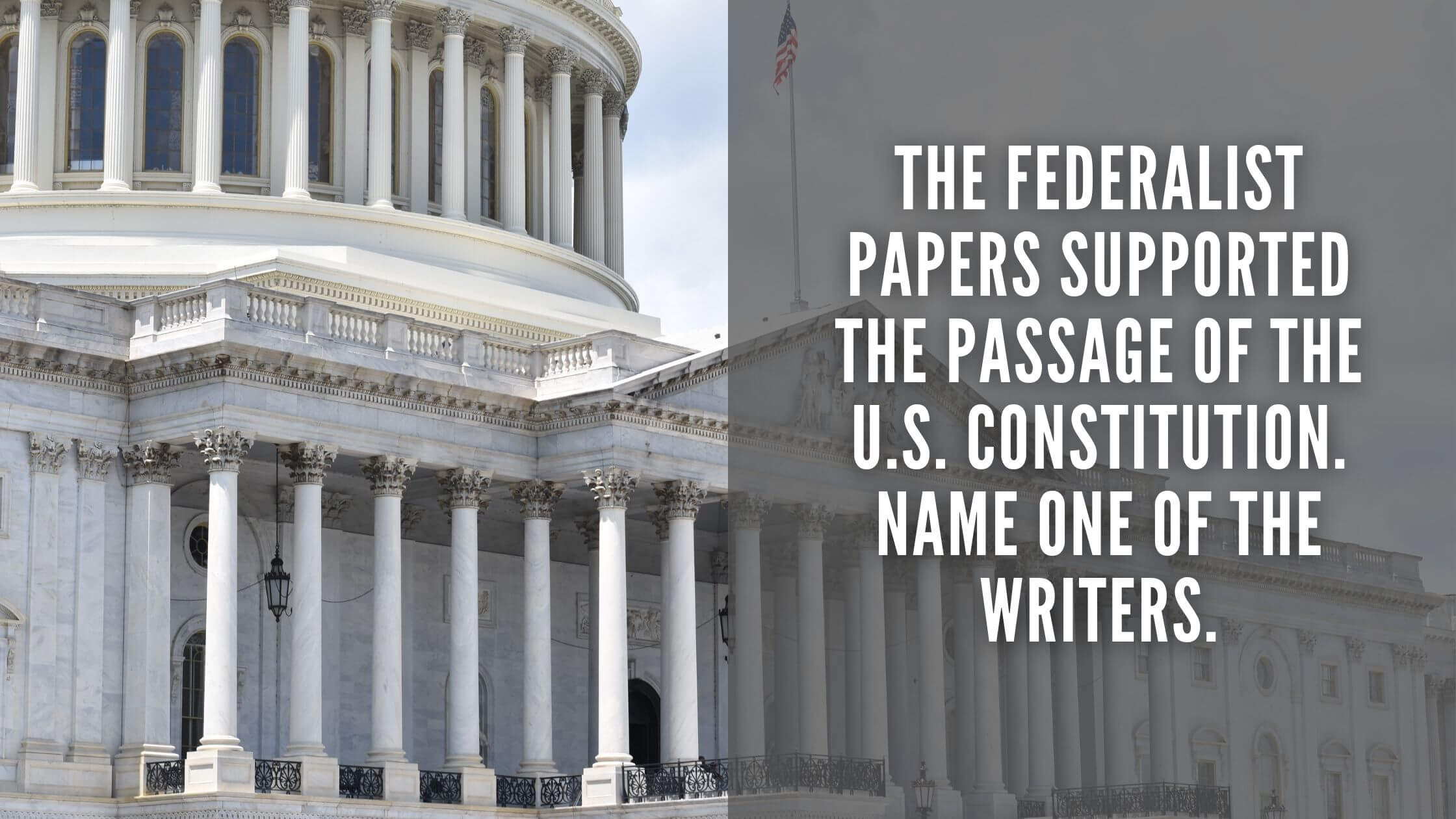To pass the US citizenship test, you will have to answer 10 of a possible 100 questions. The following question is from the USCIS test.
Who did the United States fight in World War II?
Answer:
Japan, Germany, and Italy.
The following is a full explanation of the USCIS question:
Prelude to War – Pearl Harbor
The United States remained resolute in their resistance to getting involved in the Second World War, seeking to stay neutral as they had for the first part of World War I. Although they would support the Allies in many different ways in the early years of the conflict, most notably with the Lend-Lease Act of 1941, the prospect of active military involvement was widely unpopular throughout the country. However, US neutrality was complicated by the burgeoning Japanese Empire, whose expanding presence in the Pacific and alliance with Nazi Germany in 1940 threatened American interests.

Get Smarter on US News, History, and the Constitution
Join the thousands of fellow patriots who rely on our 5-minute newsletter to stay informed on the key events and trends that shaped our nation's past and continue to shape its present.
Japan was heavily reliant on the United States for oil imports to fuel its growing naval strength. Any disruption of this trade would directly threaten the interests of their Pacific empire. When the US terminated all trade with Japan in July 1941, a military conflict became inevitable. On December 7, 1941, Japan attacked the US naval base at Pearl Harbor in Hawaii, resulting in one of the most significant military disasters in American history.
The Japanese inflicted about 3,500 casualties, destroyed four battleships and nearly 200 aircraft, and badly damaged several destroyers, cruisers, and other naval vessels. Although they failed to destroy any aircraft carriers, their primary targets, which were away from Pearl Harbor performing naval maneuvers. The United States declared war on Japan on December 8, 1941, and officially declared war on Germany and Italy three days later.
1942 European Theater – Operation Torch
The main focus of the US at the outset of its involvement in World War II was the European theater, seeking to relieve the strain put on Great Britain and the Soviet Union by Adolph Hitler’s German forces.
The first major operation by the US in that theater of operations was the invasion of North Africa, known as Operation Torch. The Allied powers wanted to get a foothold on the southern Mediterranean coast where they could attack and invade several weak points on the German and Italian fronts.
The Allies invaded with three different task forces along the coast of North Africa from Morocco to Algeria, starting on November 8, 1942, and ending on November 16, 1942. The invasion was widely successful due largely to the mixed loyalties of the defending troops tasked with defending the coast, who were primarily French.
German forces attempted to retake the territory lost by their unreliable French allies, but the Allied troops ultimately defeated the German reinforcements, fully liberating North Africa in the spring of 1943.
1942 Pacific Theater – Battles of the Coral Sea and Midway
The United States struggled to keep up with the Japanese Empire in the early days of the Pacific War, as the majority of resources were invested in the European front. The first major American victory over Japan occurred at the Battle of Coral Sea from May 4-8, 1942, in the first sea battle in history to exclusively involve aircraft. Although the battle was tactically a draw, it was a major strategic victory as it was the first time that Japanese power had been checked in the Pacific.
A month later, from June 4-7, the Japanese and Americans would face off again near the island of Midway, a small military base in the Pacific whose capture would directly threaten Hawaii. The American navy scored a decisive victory over the Japanese, sinking four aircraft carriers and destroying nearly 250 aircraft. The Battle of Midway was the most important naval battle in American history and turned the tide of the war in the Pacific theater.
1943 European Theater – Invasion of Italy
After the invasion of North Africa, British Prime Minister Winston Churchill convinced the Allied powers to shift focus to Italy, a supposed weak spot of the German front. The American and British troops first invaded the island of Sicily, liberating it in just 38 days.
However, large numbers of German and Italian troops escaped to mainland Italy, foreshadowing a much more difficult conflict in the days ahead. On September 3, 1943, the Allied forces invaded Italy and, despite fierce German resistance, were able to capture most of southern Italy by early October 1943.
Despite early success against the Germans, the Allied invasion soon slowed significantly, as German and Italian lines were heavily fortified. It took nearly eight months for the Allies to secure central Italy and capture Rome, occurring on June 4, 1944. Although the fighting in Italy would continue to rage on, it would soon be overshadowed by the Allied invasion of Normandy.
1944 European Theater – D-Day
The most significant invasion in US military history occurred on June 6, 1944, forever known as D-Day. The D Day invasion saw the Allied forces – led by the United States – invade France off the coast of Normandy and establish a foothold against the German army, suffering over 10,000 casualties in the process.
The invasion signaled the beginning of the end of the German Reich. Germany now had to fight a war on three different fronts: France in the west, Italy in the south, and Russia in the east.
1944 Pacific Theater – Progress in the Pacific
The US forces continued to make progress in the Pacific, expertly employing a tactic of “island-hopping,” a strategy whereby certain islands were captured and others bypassed depending on their strategic importance. Several important locations were invaded or liberated, including the Marshall Islands, New Guinea, and the Philippines. The United States navy also inflicted another devastating defeat on the Japanese at the Battle of the Philippine Sea from June 19-20, where over 500 Japanese planes were shot down.
1945 – End of the War
The German army briefly saw a brief resurgence in early 1945 during the Battle of the Bulge, a last-ditch effort by Hitler to break up the Allied forces bearing down on Germany. The German forces successfully overran the Allied lines but were eventually beaten back after low supplies and manpower shortages stalled the offensive. The Allies regained the initiative, pushed into Germany, and in conjunction with the USSR from the eastern front, forced a German surrender on May 7, 1945.
The Japanese Empire held out longer than the German Reich, doggedly resisting the American forces quickly closing in on the mainland. However, victories by the US at Iwo Jima and Okinawa in early 1945 gave the Americans major airbases within easy striking distance of Japan.
Eventually, after dropping an atomic bomb on Hiroshima and Nagasaki, the Japanese formally surrendered on September 2, 1945.




